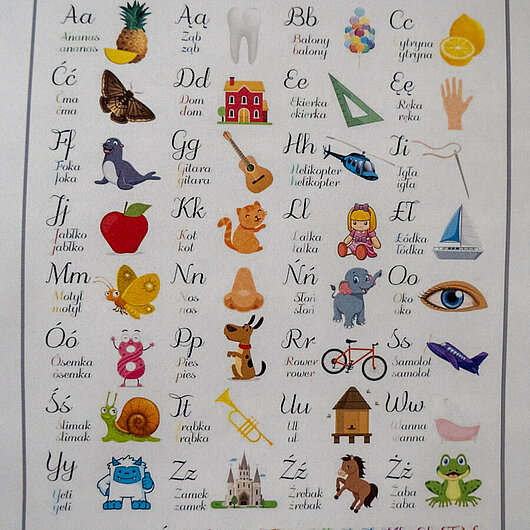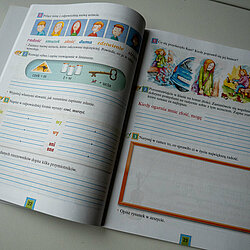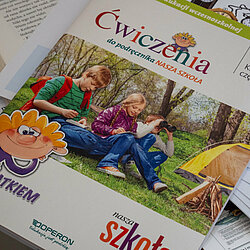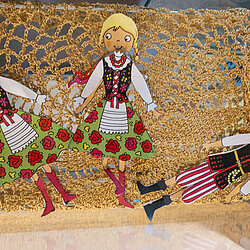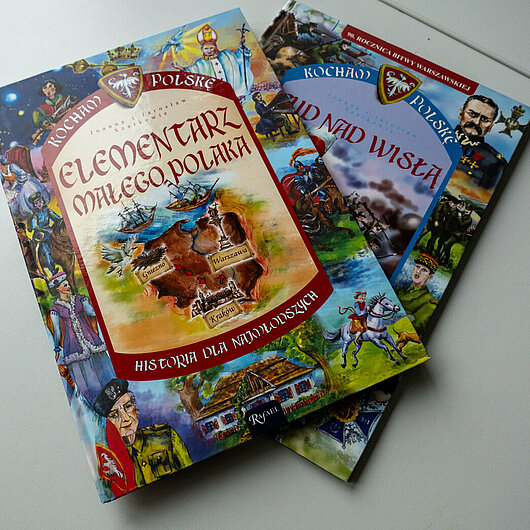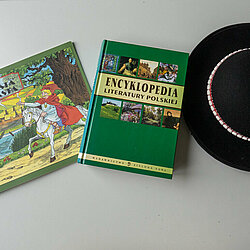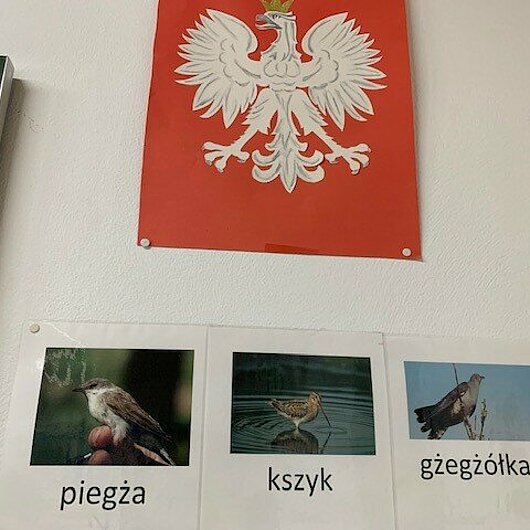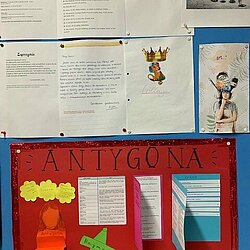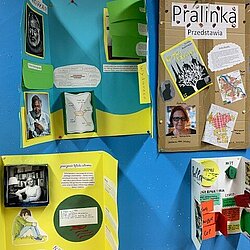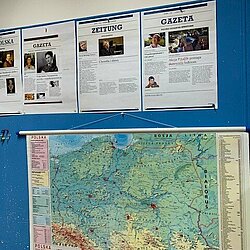If you like nature, you have to love Poland. The country has 23 national parks, including the last lowland forest in Europe, the Białowieża National Park in the east. In the north there are wide Baltic Sea beaches, in the south large mountains. The supernatural is also at home in Polish nature: the Giant Mountains on the border with the Czech Republic are inhabited by the mountain spirit Rübezahl or Liczyrzepa, a popular character in Polish and German fairy tales. Poland also borders Slovakia, Ukraine, Belarus, Lithuania and the Russian exclave of Kaliningrad. The country sees itself as a bridge on the way from Western to Eastern Europe.
The geography of Poland is only one part of the great diversity of this country that Polish-speaking pupils at the European School Munich learn in Polish lessons and in the European Hours. The focus is, of course, on the Polish language, which is taught by native-speaking teachers. The younger pupils read the poem "Lokomotywa" by Julian Tuwin, which is world-famous among Polish children. It skilfully imitates the sounds of a locomotive. Polish pupils at the European School Munich are part of SWALS, the Students without a language section, as the international section at the European Schools is officially called. They are enrolled in one of the larger language sections and receive additional lessons in which they learn the history of the country and its culture in addition to the Polish language.
Young people initially find age-appropriate access to Polish literature in the Secondary School through contemporary works. Certainly not everyone knows the "Saga o Wiedźminie" by Andrzej Sapkowski in the original Polish. But millions of people worldwide have watched the fantasy series "The Witcher" on Netflix or played the computer game of the same name, both based on the "Geralt Saga" series of novels. The science fiction author Stanisław Lem is also known far beyond Poland. In Polish classes, his sometimes humorous, sometimes philosophical stories are naturally read in Polish. In the upper grades, serious Polish literature and poetry are increasingly part of the curriculum, such as the works of Nobel Prize winners Wisława Szymborska, Olga Tokarczuk and others.
Poland has not only produced well-known authors who, like Lem, fictitiously deal with technologies. Poles are also to thank for decisive scientific advances in the real world. For example, there is the astronomer Nicolaus Copernicus, who in 1543 described the heliocentric view of the world, which places the sun - and not the earth - at the centre of the universe. A realisation with profound consequences far beyond science: the Copernican Turn represents the end of the Middle Ages and the transition to Enlightenment and rationality in modern times. Pupils of all language sections also encounter a significant figure in science in more recent history, namely in the subject of chemistry. The radioactive element polonium is one of the few chemical elements named after a nation. Marie Skłodowska Curie wanted to commemorate her homeland with this name. The scientist and two-time Nobel Prize winner was born in Warsaw.
In addition to language and science, Polish customs, traditions and culture also play an important role in the lessons. The younger pupils in Kindergarten and Primary School are taught these, for example, in the context of joint celebrations and activities. Music is also important. Before anyone asks: No, the country of Poland has nothing at all to do with the Polonäse Blankenese, which German carnivalists dance. With the European composer Frédéric Chopin, however, it does. His father was French, his mother Polish. Finally, the older pupils increasingly learn the facts about Poland's history, which is known to be very eventful.
They learn that the Kingdom of Poland was founded as early as 1025, and that the country was repeatedly torn apart by the great powers in the East and West. This is another reason why many Polish citizens today have a strong sense of history. The Polish lessons at the European School Munich aim to awaken this awareness in the pupils as well. The aim is to familiarise them with the many stages of Polish history, its special features and its role in the European context - from the founding of the kingdom to the first modern constitution in Europe on 3 May 1791 to the change of system through the influence of the Solidarność movement to the Poland of today.
Last but not least, an extremely important contribution to modern pedagogy comes from Poland. In the 1920s, the Jewish Polish paediatrician and educationalist Janusz Korczak was one of the first educationalists ever to formulate children's rights. Among other things, he demanded that children be taken seriously as personalities and treated with the same respect as adults. A hundred years ago, this was far from being a matter of course. So when we at the European School Munich meet today in mutual respect, not only between nationalities and cultures, but also between different generations, we can remember that this idea was born in Poland.
Profile Poland
- Capital: Warszawa (Warsaw)
- Population: 38.18 million (as of 2021)
- Bank holidays: 11 November is Polish Independence Day. It celebrates the regaining of Poland's independence in 1918 after 123 years of partition.
- Accession to the EU: 1 May 2004
- The European motto "United in diversity" is "Zjednoczeni w różnorodności" in Polish.
- Pupils with Polish citizenship in the European Schools system: 1170.75 (2022).
- You should know this Polish saying: Bez pracy nie ma kolaczy- No pain, no gain.

